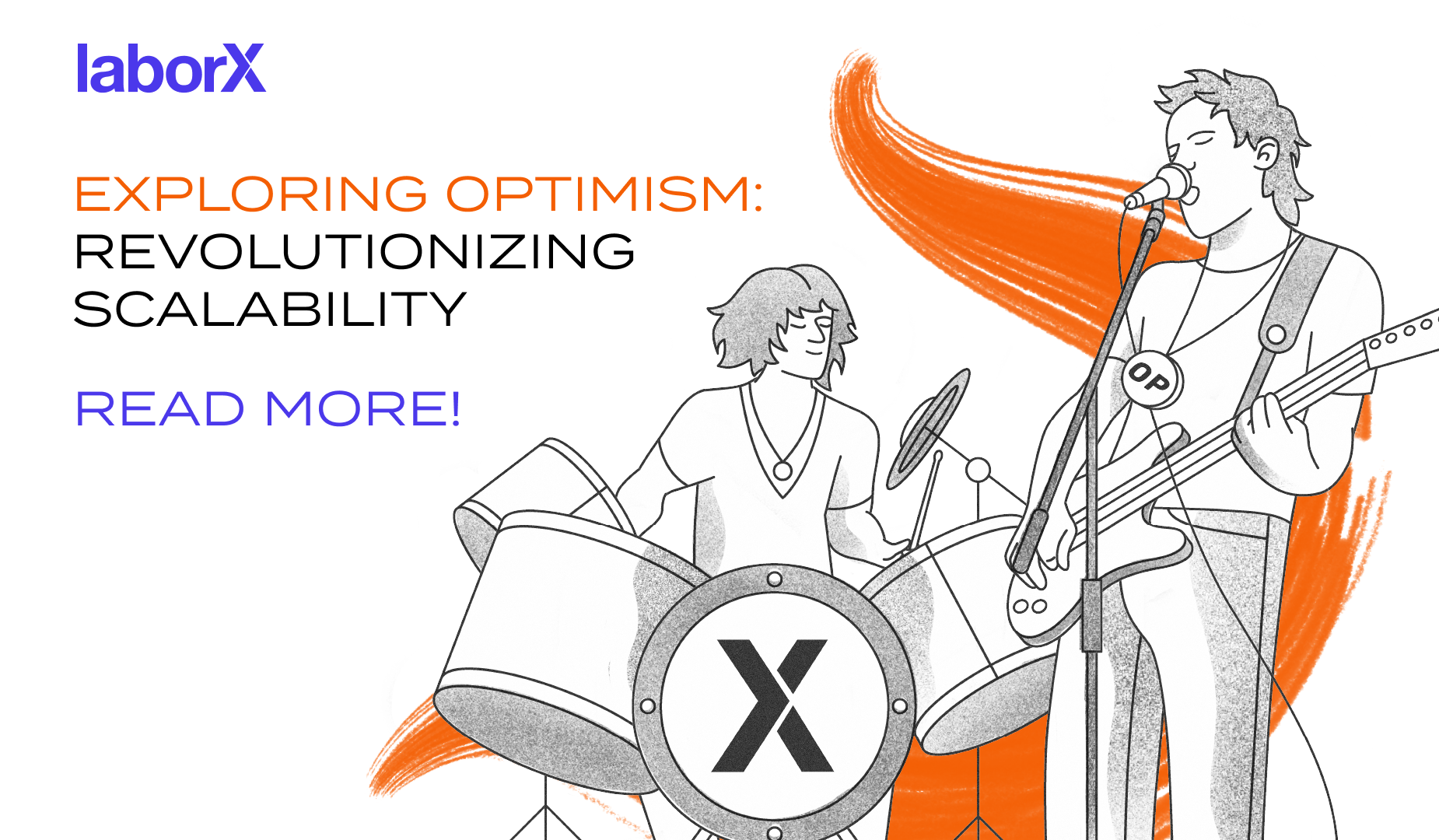It's 2023, and a different landscape affords different opportunities. Will you adapt and take advantage of the shifts, or risk being left behind?
The rise of blockchain technologies alongside the proliferation of social media has not only enabled new ways for individuals to engage with companies and do existing jobs, but created completely new sectors of the economy that were scarcely imaginable just a few years ago.
Remote work, which has been the norm in the blockchain space since its inception, is just one of the benefits of having access to powerful and ubiquitous communications platforms. This has become far more widespread since the response to the coronavirus pandemic forced us into new working habits.
But more than that, millennials (in particular) have seized the opportunities these technological developments and trends have brought, and are using them in diverse and imaginative ways – both to find jobs and earn an income, but also to forge entirely new categories of work for themselves, which fall outside of the traditional patterns of employment.

Crypto, Blockchain And Web 3.0
The cryptocurrency sector has been responsible for a large number of these opportunities, as a niche set of technologies blossomed into a trillion-dollar (and growing) industry.
Unlike the TradFi and Web 2.0 space, the blockchain world thrives on collaboration, not competition. The economies that spring up in the crypto sector are all about network effects. Currencies and tokens – just like telephone networks and social media platforms – become exponentially more useful and valuable the more people use them.
Thus the primary aim for any Web 3.0 project is to build, or access, large communities of users. This goes beyond merely finding lots of customers, to whom to sell a product – a very TradFi/Web 2.0 way of looking at success. It is about bringing people in and building value by sharing it with as many users as possible, something totally counter-intuitive to a traditional business way of thinking.
The Rise Of The Attention Economy
These new communities and collaborative economies fit together perfectly with the concept of the Attention Economy, which inherently relies on building large and loyal groups of followers.
The “attention economy” is a concept that was first suggested decades ago, in the 1970s, but that fully became a reality with the rise of social media and online advertising. The theory goes that, just like time and money, human attention is a scarce and valuable resource: there are only so many waking hours in a day, and every user only has one pair of eyes.
Web users are consequently subject to constant competition for their attention, from a vast array of content and media. Companies work hard to capture and maintain people's attention, because that’s their business model: keep people watching for longer so they can generate revenues through advertising, subscriptions and sales.
Web 2.0 is built around this model of the attention economy. All of the biggest platforms – social media networks, search engines, content streaming platforms, and so on – design their algorithms and interfaces to optimise user engagement and maximise the time users spend on them. They compete for users' attention by providing carefully-curated and personalised content, notifications, recommendations, and other addictive features to keep users engaged.
All of this paints a somewhat dystopian picture of vast corporations vying for users’ attention, deploying ever-more manipulative ways to engage them and extract value from them, without them realising what’s happening.
However, the flip side of this is that the mechanisms for monetising attention exist, in a way that they didn’t a decade ago. If you can capture attention by providing content that audiences want to view – whatever form that takes – then you can earn money from it, and potentially even make a decent living.
Leveraging The Attention Economy
Some of the first individuals (rather than corporations) to figure out that the attention economy could work for them were gamers.
The Discord platform, which launched in 2015, was created specifically to help gamers collaborate via voice message. Its rapid growth was helped by its popularity among Twitch streamers, and gamers remain its largest user base. (As a social technology Discord has also become widely used in the crypto world, where it is used to organise projects and communities.)
The best gamers were able to use these platforms to attract large followings, entertaining them by playing their favourite games. eSports became a popular sector that attracted millions of spectators, and big eSports tournaments could pay out substantial prize money.
But gamer-streamers were also monetising their communities more directly in a variety of ways. Aside from the advertising revenues that came from the hosting platforms (such as YouTube) they received donations, built up paid membership groups, received money from affiliate marketing, and more.
The same approach was soon used by a wide range of experts in different fields, including musicians and creative streamers, marketers, educators and influencers. Anyone who was able to build a large enough community around the content they created could make a respectable income, sometimes even managing to do what they loved full time.

Crypto And The Power Of Communities
That idea is taken to the next level when combined with crypto communities, which form around blockchain projects and their tokens or currencies. These are something like modern-day and highly successful versions of local currencies, which seek to bring prosperity to local economies by incentivising the use of a form of community-specific money. Of course, in the blockchain era, those communities can spread rapidly across the entire globe and include millions of people, and the frictions and limitations entailed in using conventional physical currencies are eliminated.
Crypto communities rely on the power of the network effect: building value for everybody in the community, ideally via mutual effort and active collaboration, rather than the TradFi approach of seeking to extract value from community members. With that very different ethos comes many new ways of generating income, as people carve out different roles within these unique economies.
Influencers And Educators
Just like in the mainstream attention economy, there is a whole influencer industry in the crypto world.
- Communicators, who teach their audiences about emerging technologies and platforms
- Reviewers, who try out new applications and show people how to get started with them
- Analysts, who provide their views on the markets and offer trading tips, and who offer ‘alpha’ or early access to promising projects
- News and opinion show hosts, who discuss the latest developments in the space and give their commentary on it
- Educators, who provide in-depth tutorials on anything from setting up a wallet securely to coding dApps in Solidity
- Consultants, who offer marketing or advisory services for crypto projects
These people have worked hard to become experts in their field, and then monetised that knowledge – both in conventional Web 2.0 ways, and by using methods and technologies specific to Web 3.0:
- Providing free content but offering members-only premium services
- Selling NFTs to give access to gated communities and content
- Driving viewers to a business they own, or with which they are affiliated
- Creating communities that will later be leveraged to launch new Web 3.0 projects (e.g. an NFT series)
Some influencers are successful enough to be able to combine their work with travel and other pursuits, and their lifestyle becomes a part of the attraction for their communities.
P2E Gaming
Blockchain has led to the creation of a whole new type of game: the so-called play-to-earn sector.
While Web 2.0 games often feature in-game items and currencies, which do have nominal value, these can be difficult to convert to ‘real’ cash, sometimes relying on informal and insecure marketplaces, or being vulnerable to hacks and unilateral changes by game developers.
Blockchain games use NFTs and tokens to represent items and currencies, meaning users actually own them and can do whatever they want with them, whenever they want. Moreover, these games employ sophisticated token-economic (‘tokenomic’) models to build value and balance the interests of different stakeholders.
This idea powers an updated, democratised version of eSports, where every game can be used to earn money and tournaments can be organised trustlessly, with no middlemen to take a cut of the winnings. Players have a means of monetising their time that is built into the games themselves, rather than added on as afterthoughts later and controlled by third parties.
Metaverse Creators
Metaverses are visually rich, online environments that prioritise social interaction. They are increasingly used to host games, businesses and meetings, online stores, recreational events and entertainment, as well as simply being a place to spend time.
These platforms, which include Minecraft, Roblox, DecentraLand, The Sandbox, Cryptovoxels, Somnium Space, and many more, enable users to create their own content. That might range from buildings and portable items to whole new games, music events and complex experiences. Where these platforms are blockchain-powered, digital items can seamlessly be traded as NFTs, and creators can easily charge other users for interacting with the services they build. Where they feature built-in currencies (like SAND), those tokens become worth more as the community of users grows.
Traders And Airdrop Farmers
Trading has always been a popular past-time in the crypto space, with the earliest crypto exchanges opening in 2010. While the best traders use a range of tools and technical analysis techniques to gauge where the markets are heading, maximising profits while controlling risks, others prefer simply to ‘HODL’: buy crypto and keep it for years, through the spikes and crashes of the markets, in the hope that their coins will be worth many times more than their purchase price in the future. There are tens of thousands of bitcoin millionaires alone, many of whom managed to become wealthy just by holding through two or three full market cycles.
Sometimes, the crypto world drops large profits on users with even less effort or delay. Airdrops are a popular way of distributing new tokens for a project, and these events can be highly lucrative. Those who have used platforms extensively in the past often receive larger airdrops than occasional users. In 2021, the Ethereum Name Service dropped ENS tokens that were worth thousands or even tens of thousands of dollars to some addresses – and if someone had used the service on many different addresses, they could be in for a very large total payday indeed. The same is true of UNI, 1INCH, OP and many, many more tokens. Needless to say, the practice of ‘airdrop farming’ quickly developed, where users transacted on different platforms with the hope of gaining future airdropped tokens (something that the blockchain projects behind the airdrops actively have to try to mitigate).
Other users have become rich by minting NFTs that later became popular – CryptoPunks and Bored Apes being two celebrated examples – or by yield farming DeFi tokens that later soared in value.
Conclusion
With a few exceptions (such as trading), most of these new opportunities entail tapping into large, grassroots communities in one form or another, recognising that value can be built by giving it away rather than seeking to extract it in one direction. The most successful influencers and educators in the crypto world, and the most respected, are the ones who genuinely provide useful content to the community.
The attention economy can be ruthless. When corporations or individuals no longer offer what users want, audiences can evaporate and move to something better. Nowhere is that more true than the crypto world.
In the bull markets, when hype is everywhere and profits come easily, the number of low-quality ‘experts’ increases exponentially. They tend to disappear quickly when the fun is over. It’s in the bear markets, when the tourists have left, that it’s possible to see who is truly committed, who really cares, and who is still prepared to put in the effort for their audiences. Some of the best-known names have been around for years, and will stay around for the coming market cycle. Their success is hard-earned, and well-deserved.





